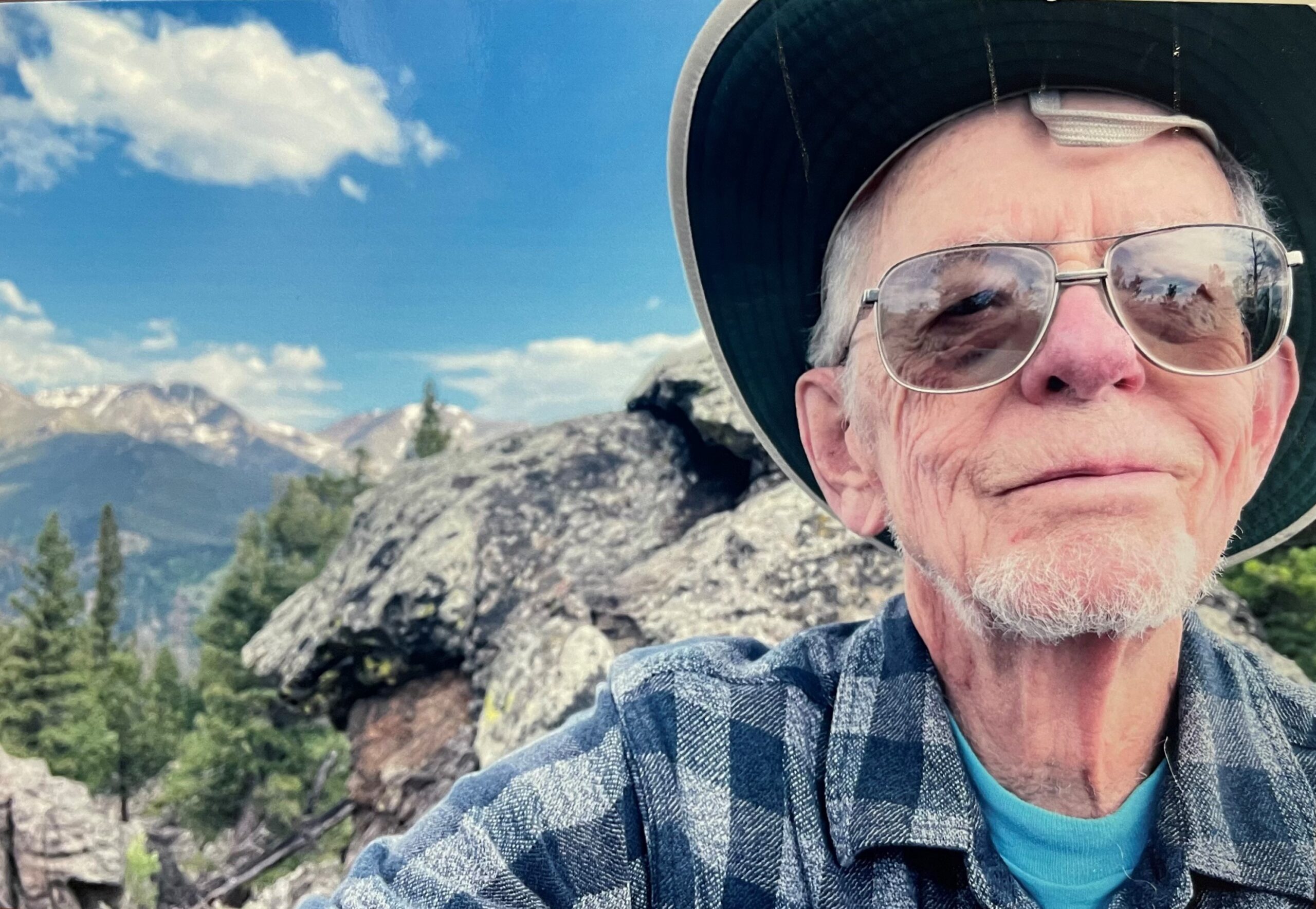Hernia surgery at Estes Park Health helps Art Turpin get back on the trail

Art Turpin of Estes Park, who turns 90 in August, is a retired high school teacher who goes hiking three days a week and reads six books a month. When an inguinal hernia threatened his routine, he turned to the experts at Estes Park Health.
“Art was not able to hike as much as he likes due to symptoms from the hernia,” explained EPH General Surgeon Dr. Jennifer McLellan. “The main risks of not fixing a hernia include a possible strangulated hernia (where the intestine becomes stuck in a hernia and starts to diet) or that the hernia will get bigger over time.”
Of course, there are also risks to surgery. However, Dr. McLellan emphasized that most people tolerate the procedure very well, even patients in overall good shape who are starting their tenth decade of life.
Art was scheduled to have surgery on St. Patrick’s Day, but pre-operative testing showed he had a yeast infection and the team had to delay the procedure.
“I remember Dr. McLellan reassured me by saying, ‘I will make sure you get this, even if I have to come in on a day when I am not scheduled to work,’” Art recalled. “She made good on her word, and I had the procedure on May 2.”
Laparoscopic inguinal hernia surgery is performed through three small incisions about ½ inch each. The surgeon uses a camera and long thin instruments that are inserted through these little incisions to fix the hernia. A large piece of mesh is used to patch the hole, which is what a hernia is. The mesh is secured to the ligament overlying the pelvic bone, as well as to the inside of the abdominal wall. The surgery takes about one to two hours.
“I am grateful to Dr. McLellan for performing the operation and getting me back in shape so I could get outside this summer,” Art said. “I have used the services of Estes Park Health over three decades and overall, I am very pleased with the care I have received. We are lucky to have this facility right here where we live.”
Three-and-a-half weeks after his procedure, Art was back to regular activity.
“It feels so great to be able to help all my patients,” Dr. McLellan commented, “especially someone like Mr. Turpin who really wanted to get back to his hiking as soon as possible. I’m so glad he has done well.”
Dr. McLellan wants patients to know that hernia surgery is much different than it was years ago. Many hernia surgeries are now performed laparoscopically.
“I have seen major advantages of this method for my patients,” she explained. “Compared to most open hernia surgeries, patients who have laparoscopic surgery tend to have less pain and faster recovery. Because we performed Mr. Turpin’s surgery laparoscopically, he was back on the trails in just a few short weeks. And he barely used any pain medications after surgery!”
Symptoms from an inguinal hernia can vary, but in general, people experience a bulging in the groin, usually associated with mild pain or discomfort. The bulge can typically be pushed back in, especially when lying down. Both men and women can develop inguinal hernias, but it is more common in men. Women should usually have a hernia repaired if one develops, whereas men do not necessarily need to have a small hernia repaired.
If you notice a bulging in your groin, or you are having pain, please talk to your doctor. Physicians usually recommend surgical repair in men if the hernia bulge starts to get larger, if it is more difficult to push back in, or if it is becoming more symptomatic. Signs you might need an emergency hernia repair include being unable to push the bulge back in and having severe pain. This can be associated with nausea and vomiting as well if the intestine is stuck in the hernia.
Dr. McLellan and Dr. Chris Bogardus both offer laparoscopic and open hernia repairs at Estes Park Health. If you would like to learn more, please speak to your primary care provider, and have them send a referral if appropriate to the Estes Park Health General Surgery Service.


